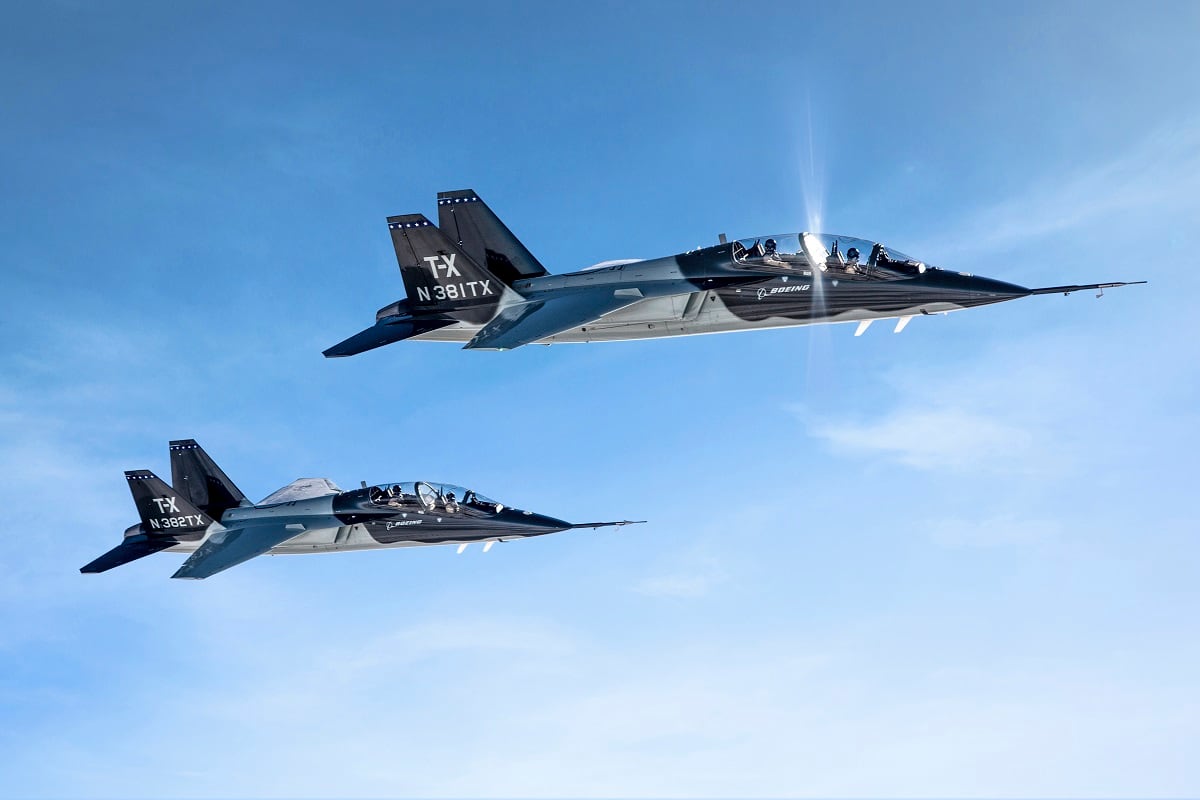WASHINGTON — Last year, the Air Force tapped seven defense companies for a $6.4 billion opportunity for “Red Air” training where contracted pilots pose as aggressors in air-to-air combat. With the fiscal 2020 budget finally approved, those firms are hungry to hear for more information about when and where they start flying.
The companies — Air USA Inc., Airborne Tactical Advantage Company (ATAC), Blue Air Training, Coastal Defense, Draken International, Tactical Air Support and Top Aces Corp. — currently find themselves waiting for the next phase of the competition, when the Air Force will issue individual work orders for a total of 22 bases that will allow contractors to begin flying this year.
“I think we’ve all watched the Air Force program develop over the last two years kind of in awe at the size of it and the ambition, the commitment they’re making to have enough adversaries out there to challenge their pilots,” said Russ Bartlett, CEO of Textron Airborne Solutions, which is the parent company of ATAC. “That’s great for industry, because the Air Force knows they need to do that.”
RELATED

Unlike major programs for weapon systems, which have a dedicated line item in the budget, the work orders for adversary air services will be paid out of the operations and maintenance account, which is more flexible. While the Air Force’s FY20 budget request flags a $151 million increase for “contract air training,” it’s unclear how much of that amount will ultimately be set aside for that adversary air services.
It will be up to Air Combat Command “to decide how much money they’re going to put against the adversary air budget. So we’re really just waiting to figure out how that all works,” said Russ Quinn, president of Top Aces. “We and the program office are looking very forward to hearing how Air Combat Command is planning on funding the contract.”
Draken International is already conducting aggressor flights at Nellis Air Force Base, Nev., as part of a five-year contract awarded in 2018. That work is helping the company keep its Red Air planes ready ahead of work at other bases, said Sean Gustafson, Draken’s vice president of business development.
"We're flying 6,000 to 7,000 hours a year out there right now,” he said. “We’re excited for the task orders to come out shortly, looking to expand and set up operations on the East Coast and then supporting those bases.”
The Draken pilots, who currently fly the Aero Vodochody L-159E Honey Badger and Douglas A-4 Skyhawk, regularly deploy from Nellis AFB and visit other installations, including Hill AFB in Utah, Eglin AFB in Fla., and Holloman AFB in N.M.
The company will begin adding Mirage F1s to the mix next month, Gustafson said.
“We’re very excited about that, because that will be the first radar-equipped, supersonic aircraft in the industry. We have the first three [of 24 total] going out there in February,” he said. The company has also purchased 12 radar- equipped, supersonic Atlas Cheetah fighters that will help cover Air Force requirements outside of Nellis.
Meanwhile, the other companies are doing training and modifications necessary to get their aggressor fleets ready to fly whenever the U.S. Air Force decides it needs those planes.
Top Aces has purchased 29 used F-16s from an undisclosed user specifically for the Air Force’s adversary air contract. Those aircraft are not yet in the United States, but Quinn is confident that the company will have the aircraft in hand in early spring, he said.
After that, Top Aces will begin modifying each jet with an open architecture system that will allow the company to more easily outfit the aircraft with a range of radar, sensors, electronic warfare pods or other technologies that increase the capability of Red Air forces, he said.
Depending on whether the company wins a contract with Germany for adversary air services, it may also have excess capacity with its Douglas A-4N Skyhawk fleet, which it could also offer to help supplement the U.S. Air Force’s needs, Quinn said.
ATAC plans to use its new fleet of Mirage F1 jets to meet the Air Force’s requirements. So far, the company has fully trained one F1 pilot, who flew the first ATAC Mirage in August. Another two pilots were set to begin training in December, Bartlett said late last year.

“On the airplane side, we’re in really good shape. Sixty-three airplanes is a huge win for us. There are a lot of economies of scale that we intend to capitalize on,” he said. “The challenge is going to be — of course — hiring and retaining pilots. The services are trying keep their pilots and grow their pilot cadres; the airlines are hiring aggressively and paying lucrative salaries, and this industry is growing by leaps and bounds with just this Air Force program.”
So far, recruiting pilots has not been a problem for Draken, Gustafson said. The company has employed 52 aggressor pilots to meet the demands of its contract with Nellis, and has a “stack of resumes” from pilots that jobs as the company expands to other bases.
“We’re doing well on [hiring],” he said. “Some folks, they don’t want to go to the airlines. They recently retired from the military and they want to keep flying fighters.”
The company is looking to grow its fleet with new aircraft, as well, he added.
“We should have some pretty exciting news about five to six months from now,” he said.
Valerie Insinna is Defense News' air warfare reporter. She previously worked the Navy/congressional beats for Defense Daily, which followed almost three years as a staff writer for National Defense Magazine. Prior to that, she worked as an editorial assistant for the Tokyo Shimbun’s Washington bureau.





